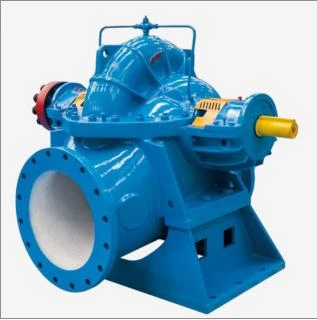Nepali
- Afrikaans
- Albanian
- Amharic
- Arabic
- Armenian
- Azerbaijani
- Basque
- Belarusian
- Bengali
- Bosnian
- Bulgarian
- Catalan
- Cebuano
- Corsican
- Croatian
- Czech
- Danish
- Dutch
- English
- Esperanto
- Estonian
- Finnish
- French
- Frisian
- Galician
- Georgian
- German
- Greek
- Gujarati
- Haitian Creole
- hausa
- hawaiian
- Hebrew
- Hindi
- Miao
- Hungarian
- Icelandic
- igbo
- Indonesian
- irish
- Italian
- Japanese
- Javanese
- Kannada
- kazakh
- Khmer
- Rwandese
- Korean
- Kurdish
- Kyrgyz
- Lao
- Latin
- Latvian
- Lithuanian
- Luxembourgish
- Macedonian
- Malgashi
- Malay
- Malayalam
- Maltese
- Maori
- Marathi
- Mongolian
- Myanmar
- Nepali
- Norwegian
- Norwegian
- Occitan
- Pashto
- Persian
- Polish
- Portuguese
- Punjabi
- Romanian
- Russian
- Samoan
- Scottish Gaelic
- Serbian
- Sesotho
- Shona
- Sindhi
- Sinhala
- Slovak
- Slovenian
- Somali
- Spanish
- Sundanese
- Swahili
- Swedish
- Tagalog
- Tajik
- Tamil
- Tatar
- Telugu
- Thai
- Turkish
- Turkmen
- Ukrainian
- Urdu
- Uighur
- Uzbek
- Vietnamese
- Welsh
- Bantu
- Yiddish
- Yoruba
- Zulu
Telephone: +86 13120555503
Email: frank@cypump.com
अक्ट . 17, 2024 16:28 Back to list
sewage transfer pump
The Role of Sewage Transfer Pumps in Wastewater Management
Sewage transfer pumps play a crucial role in the efficient management of wastewater systems in both residential and industrial settings. These pumps are designed to move sewage and wastewater from one location to another, ensuring that it is properly processed and treated before it is released back into the environment or returned to the water supply.
Understanding Sewage Transfer Pumps
At their core, sewage transfer pumps function by creating a difference in pressure that allows wastewater to flow from lower to higher points. This is necessary when gravity alone cannot move the sewage effectively, particularly in situations where treatment plants are located at a higher elevation than the source of the wastewater. By utilizing electrical or diesel-powered motors, these pumps generate the necessary force to convey sewage through a network of pipes.
There are several types of sewage transfer pumps, each catering to different sizes and types of sewage systems. The most common types include submersible pumps, which are installed underwater and are ideal for applications with fluctuating sewage levels, and centrifugal pumps, which use a rotating mechanism to create flow. Progressive cavity pumps are another variation, known for their ability to handle viscous materials and solids. Choosing the right pump depends on factors such as the volume of wastewater, the type of solids present, and the specific requirements of the treatment facility.
Importance of Sewage Transfer Pumps
The importance of sewage transfer pumps cannot be overstated. They ensure that raw sewage is transported efficiently to treatment facilities, minimizing the risks of overflow or backflow, which can lead to environmental degradation and public health hazards. By maintaining a steady flow of wastewater, these pumps play a vital role in preventing contamination of groundwater and nearby surface water bodies.
sewage transfer pump

Moreover, sewage transfer pumps are designed with durability and efficiency in mind. They are built to withstand harsh conditions and handle various solids, including debris, sludge, and other waste materials. This robustness helps to reduce maintenance costs and prolong the lifespan of the pumping system.
Environmental Considerations
As society becomes increasingly aware of environmental issues, the role of sewage transfer pumps in sustainable wastewater management is more critical than ever. Modern sewage pumps are designed to be energy-efficient, thereby reducing the carbon footprint associated with wastewater treatment. Additionally, many new models are equipped with advanced monitoring systems that allow for real-time tracking of pump performance, ensuring optimal operation and preventing system failures.
Furthermore, when integrated with smart technology, sewage transfer pumps can contribute to a more sustainable approach by predicting maintenance needs, optimizing power consumption, and improving overall system reliability. This smart technology can help municipalities manage their resources more effectively, saving money and reducing unnecessary environmental impact.
Conclusion
In summary, sewage transfer pumps are an indispensable component of modern wastewater management systems. Their ability to efficiently move sewage and wastewater ensures that treatment facilities can function effectively, thus safeguarding public health and the environment. By investing in quality sewage transfer pumps and advanced technology, communities can enhance their wastewater infrastructure, paving the way towards more sustainable and efficient waste management practices. As we continue to face the challenges of urbanization and environmental conservation, the role of these pumps will only become more significant, highlighting the need for continued innovation and improvement in this critical field.
-
High-Performance Air Pumps for Sand & Gravel | Efficient Transport
NewsAug.03,2025
-
ISG Series Vertical Pipeline Pump - Chi Yuan Pumps Co., LTD.|Energy Efficiency, Corrosion Resistance
NewsAug.03,2025
-
ISG Series Pipeline Pump - Chi Yuan Pumps | Energy Efficiency&Compact Design
NewsAug.03,2025
-
ISG Series Vertical Pipeline Pump - Chi Yuan Pumps Co., LTD.|High Efficiency, Low Noise, Durable
NewsAug.02,2025
-
ISG Series Vertical Pipeline Pump - Chi Yuan Pumps | High Efficiency, Low Noise
NewsAug.02,2025
-
ISG Series Vertical Pipeline Pump- Chi Yuan Pumps Co., LTD.|High Efficiency&Compact Design
NewsAug.02,2025










